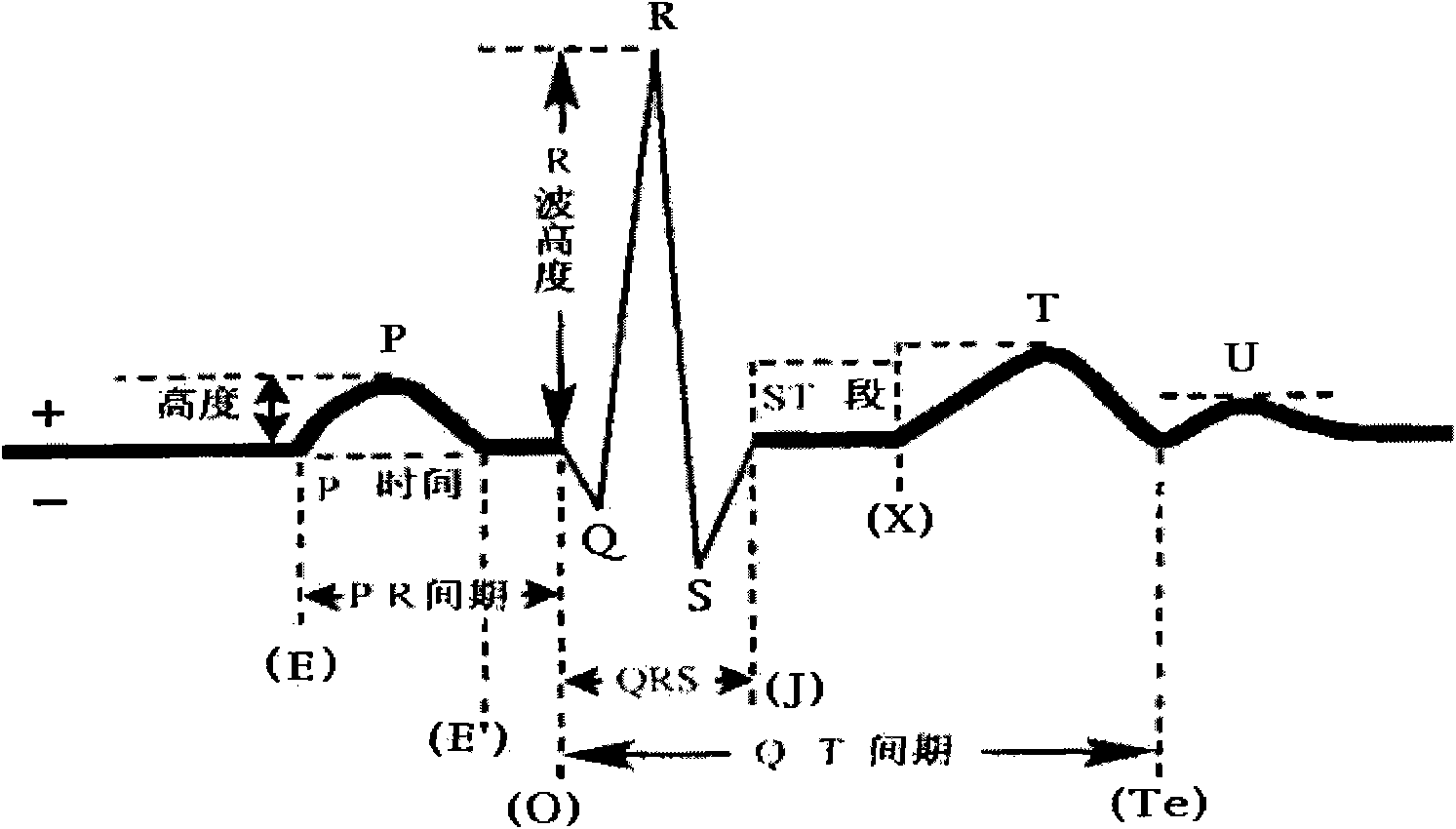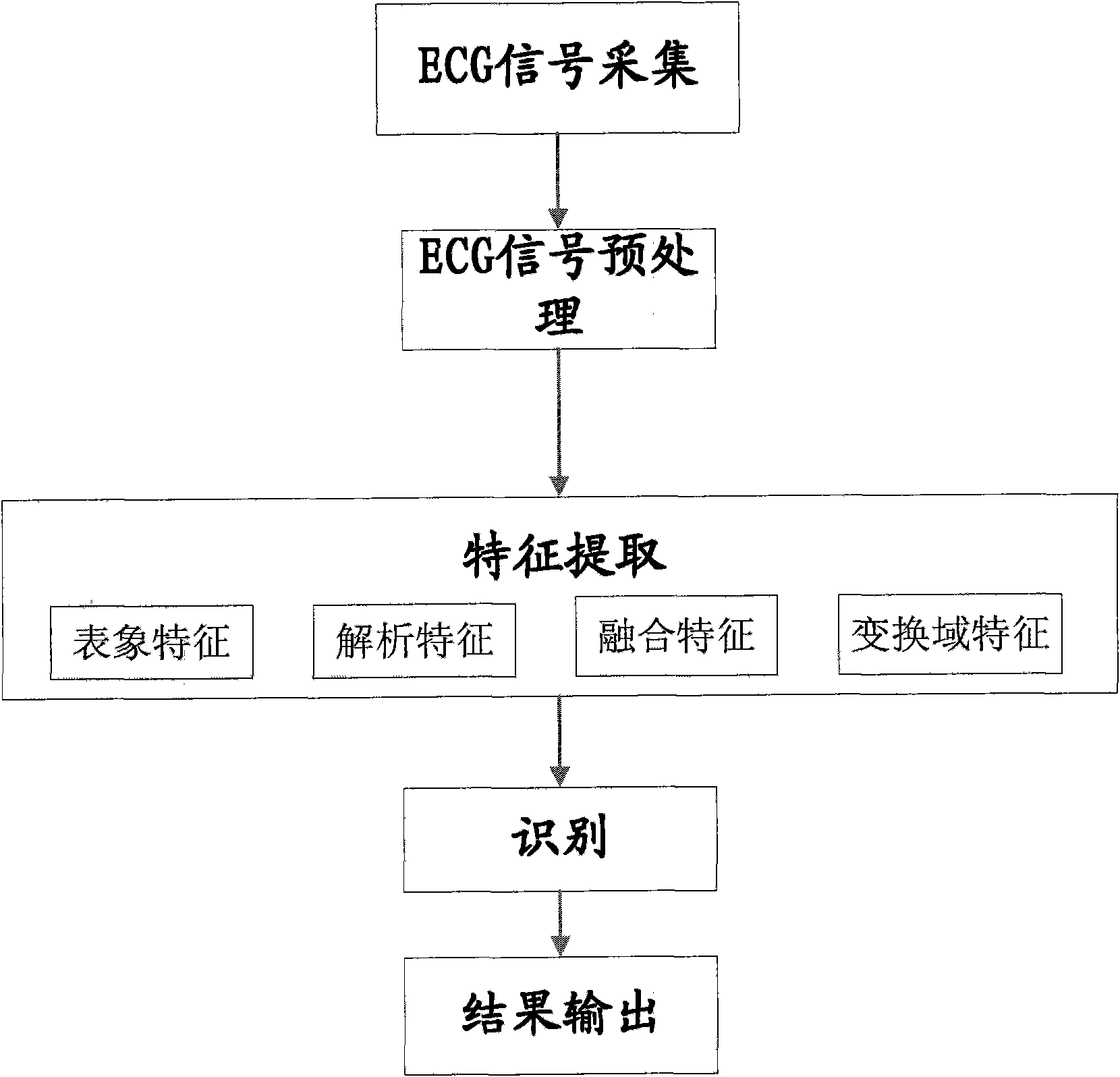Identification method and identification system using identification method
A technology for identification and identification, applied in the field of identification, can solve the problems of low frequency, mainly between 10Hz-15Hz, unobservable, large slope, etc.
- Summary
- Abstract
- Description
- Claims
- Application Information
AI Technical Summary
Problems solved by technology
Method used
Image
Examples
Embodiment approach 1
[0047] The identification method according to this embodiment includes processes such as ECG signal input, ECG signal preprocessing, feature extraction, identification, and result output. The flow chart of the identification method according to this embodiment is as follows figure 2 shown. These processes are described separately below.
[0048] 1. ECG signal acquisition
[0049] The present invention utilizes the Medilog AR12 (holter) of Oxford Instrument Company to collect electrocardiogram, the sampling frequency is 1024Hz, and the quantization is 16bit. Of course, it is also possible to use other instruments, or adopt different sampling frequencies and bit rates, as long as the present invention can be realized. Each person collects two ECG signals, each for 2 minutes, and the time interval between the two ECG signals is more than one day, so as to ensure the robustness of the ECG identification method under heart rate variability. 30 segments of ECG data from differe...
Embodiment approach 2
[0070] The identification method according to this embodiment includes, in addition to the above-mentioned identification method based on ECG signals, a fingerprint identification method, that is, combined identification is performed through ECG signals and fingerprint features. In this embodiment, it includes the ECG identification process and fingerprint identification process carried out sequentially, including the following steps: (a) signal acquisition, wherein the ECG signal and fingerprint image of the human body are collected synchronously; (b) ECG signal preprocessing, The collected ECG signal is filtered; (c) ECG feature extraction, wherein the ECG feature is extracted, and the ECG feature vector is established; (d) ECG identity recognition, wherein the ECG feature vector of the person to be identified is pre-stored in the ECG feature template library Compared with the ECG feature vectors in ECG, when the ECG identification is successful, the next step of fingerprint ...
Embodiment approach 3
[0074] In this embodiment, ECG signals and fingerprint features are also used for combined identification. The difference between this embodiment and the second embodiment is that in this embodiment, instead of performing identity recognition and fingerprint recognition based on ECG signals separately, the extracted fingerprint features and ECG features are fused together, and the established The feature vector of is used as the identification feature vector. Specifically, the method includes the following steps: (a) signal acquisition, wherein the ECG signal and the fingerprint image of the human body are synchronously collected; (b) ECG signal preprocessing, wherein the collected ECG signal is filtered; (c) ECG feature extraction, wherein the ECG feature is extracted; (d) fingerprint image preprocessing, wherein the fingerprint image is preprocessed; (e) fingerprint feature extraction, wherein the fingerprint feature is extracted; (f) fingerprint feature and ECG feature fusi...
PUM
 Login to View More
Login to View More Abstract
Description
Claims
Application Information
 Login to View More
Login to View More - R&D
- Intellectual Property
- Life Sciences
- Materials
- Tech Scout
- Unparalleled Data Quality
- Higher Quality Content
- 60% Fewer Hallucinations
Browse by: Latest US Patents, China's latest patents, Technical Efficacy Thesaurus, Application Domain, Technology Topic, Popular Technical Reports.
© 2025 PatSnap. All rights reserved.Legal|Privacy policy|Modern Slavery Act Transparency Statement|Sitemap|About US| Contact US: help@patsnap.com



